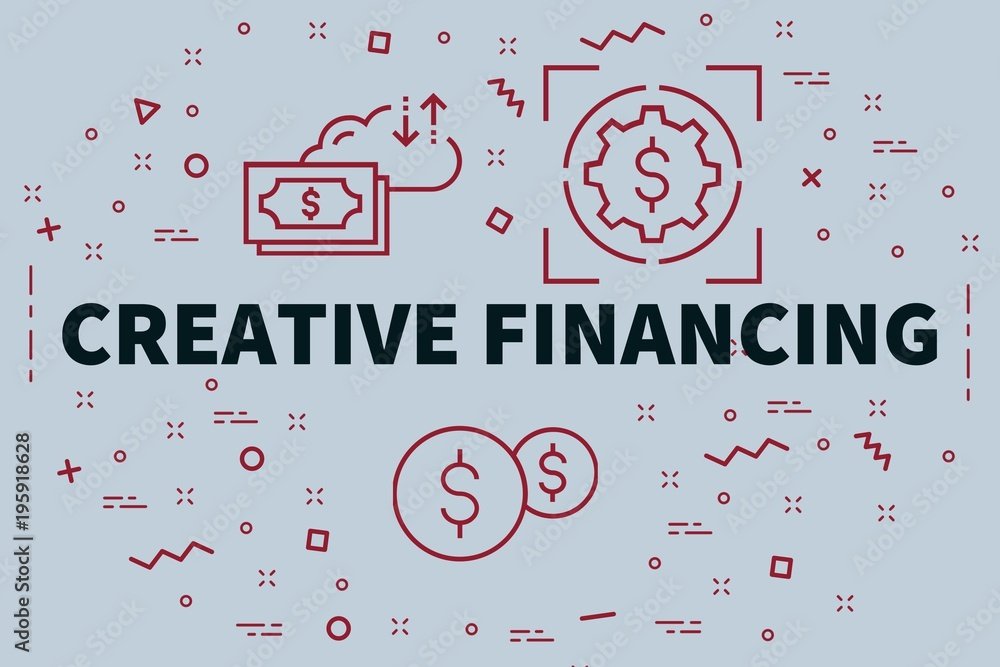Creative financing refers to alternative methods of financing real estate transactions that go beyond traditional mortgage loans from banks or financial institutions. These creative financing techniques allow buyers and sellers to structure deals in unique ways to overcome obstacles such as lack of credit, insufficient down payment, or unconventional property types. Here’s a detailed exploration of creative financing methods in real estate:
Seller Financing:
Owner Financing: In seller financing, the seller acts as the lender and provides financing to the buyer to purchase the property. Instead of obtaining a mortgage from a bank, the buyer makes payments directly to the seller over time, typically with agreed-upon terms such as interest rate, repayment schedule, and duration.
Lease Option: A lease option agreement allows the buyer to lease the property for a specified period with an option to purchase the property at a predetermined price within the option period. The buyer pays an upfront option fee and monthly lease payments, part of which may be credited toward the purchase price if the option is exercised.
Creative Lease Arrangements:
Rent-to-Own: Rent-to-own agreements allow tenants to rent a property with the option to purchase it at a later date, usually within a specified timeframe. A portion of the rent payments may be credited toward the purchase price, providing tenants with an opportunity to accumulate equity while renting.
Master Lease: In a master lease arrangement, the tenant leases the property from the owner and then subleases it to another party, often with more favorable terms. The tenant acts as an intermediary between the owner and subtenant, potentially generating positive cash flow from the difference in lease payments.
Creative Partnerships:
Joint Ventures: Joint venture partnerships involve two or more parties pooling resources and expertise to invest in real estate projects collectively. Each partner contributes capital, skills, or resources to the venture and shares in the profits or losses according to the terms of the partnership agreement.
Equity Sharing: Equity sharing agreements allow investors to partner with homeowners to purchase properties together. The investor provides the down payment or financing, while the homeowner contributes equity in the property. Profits from the property’s appreciation or rental income are shared between the parties based on their ownership interests.
Seller Concessions:
Seller Carryback: In a seller carryback arrangement, the seller agrees to carry back a portion of the purchase price in the form of a loan to the buyer. This allows the buyer to finance part of the purchase price through the seller’s financing, reducing the need for a large down payment or third-party financing.
Seller Second Mortgage: Similar to seller carryback, a seller second mortgage involves the seller providing a second mortgage to the buyer to finance part of the purchase price. The buyer obtains a first mortgage from a traditional lender and then receives additional financing from the seller to cover the remaining balance.
Creative Financing Instruments:
Wraparound Mortgage: A wraparound mortgage combines the existing mortgage with a new mortgage from the seller, allowing the buyer to assume the seller’s mortgage and obtain additional financing for the purchase. The buyer makes payments to the seller, who, in turn, continues to make payments on the underlying mortgage.
Subject-to Financing: Subject-to financing involves the buyer purchasing the property “subject to” the existing mortgage, meaning the buyer takes over the mortgage payments without formally assuming the loan. This allows the buyer to acquire the property without qualifying for a new loan or obtaining financing from a traditional lender.
Creative Use of Hard Money Loans:
Bridge Loans: Bridge loans are short-term loans used to bridge the gap between the purchase of a new property and the sale of an existing property. Investors can use bridge loans to fund real estate transactions quickly and take advantage of time-sensitive opportunities.
Fix-and-Flip Financing: Fix-and-flip financing provides funding for investors to purchase distressed properties, renovate them, and sell them for a profit. Hard money lenders offer short-term loans based on the property’s after-repair value (ARV), allowing investors to finance both the purchase and renovation costs.
Crowdfunding and Peer-to-Peer Lending:
Real Estate Crowdfunding: Real estate crowdfunding platforms allow investors to pool their capital to invest in real estate projects collectively. Investors can participate in a wide range of projects, including residential, commercial, and multifamily properties, with varying investment minimums and risk profiles.
Peer-to-Peer Lending: Peer-to-peer lending platforms connect borrowers with individual investors willing to lend money for real estate projects. Borrowers can obtain financing outside of traditional banking channels, while investors can earn returns by funding loans secured by real estate assets.
In summary, creative financing encompasses a variety of alternative methods for financing real estate transactions, including seller financing, lease arrangements, partnerships, seller concessions, creative financing instruments, hard money loans, and crowdfunding. These creative financing techniques provide flexibility, opportunity, and innovation in structuring real estate deals and can be tailored to meet the needs of buyers, sellers, investors, and developers in the dynamic real estate market.

